





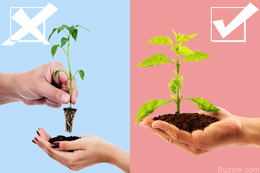 Important!Do not add fertilizers or compost at the bottom of the planting hole, as it can burn the roots or cause some damage due to the gases emitted from the compost. Add them to the soil on top after planting is done, thus ensuring that they are spread away from the trunk.Planting a tree and caring for it can be an intimidating as well as enriching experience. There are innumerable things to be done to keep the plant alive and maintain its healthy growth throughout. But, there is no need to be wary about your limited knowledge about gardening and nursery skills because a few basic tips will get you through the process and help you achieve success in your task.To know precisely what you should do while planting trees, it is always important to know what not to do and eliminate those mistakes beforehand. And trust me, these are really the basic mistakes that can be easily avoided. This will give you confidence of doing the right things and won't put your plant's life at stake while you are attempting a trial and error technique. So take a look at the following "not to do" things with illustrations and learn the right things from them.Selecting an Unhealthy Plant
Important!Do not add fertilizers or compost at the bottom of the planting hole, as it can burn the roots or cause some damage due to the gases emitted from the compost. Add them to the soil on top after planting is done, thus ensuring that they are spread away from the trunk.Planting a tree and caring for it can be an intimidating as well as enriching experience. There are innumerable things to be done to keep the plant alive and maintain its healthy growth throughout. But, there is no need to be wary about your limited knowledge about gardening and nursery skills because a few basic tips will get you through the process and help you achieve success in your task.To know precisely what you should do while planting trees, it is always important to know what not to do and eliminate those mistakes beforehand. And trust me, these are really the basic mistakes that can be easily avoided. This will give you confidence of doing the right things and won't put your plant's life at stake while you are attempting a trial and error technique. So take a look at the following "not to do" things with illustrations and learn the right things from them.Selecting an Unhealthy Plant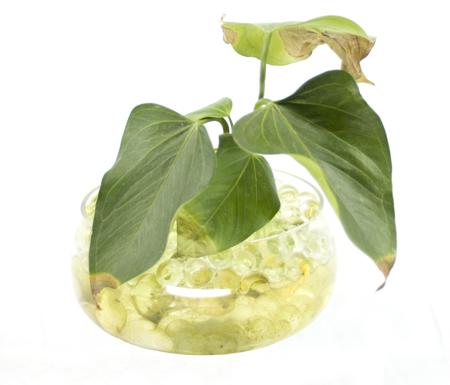 You may say that this is a pretty obvious thing and why is this mentioned here. However sometimes, we tend to overlook these obvious but important things while choosing a plant. If the bark of the plant you are selecting has cracks, cuts, or is discolored, then do not think of purchasing that plant. The plant must have a single trunk and extremely strong, lateral branching for considering it healthy. Remember to inspect the stems and buds for any signs of disease, injury, or insects on the plant. The leaves are also good primary indicators of the health of the plant and should not be yellowish or brownish in color.Improper Root System
You may say that this is a pretty obvious thing and why is this mentioned here. However sometimes, we tend to overlook these obvious but important things while choosing a plant. If the bark of the plant you are selecting has cracks, cuts, or is discolored, then do not think of purchasing that plant. The plant must have a single trunk and extremely strong, lateral branching for considering it healthy. Remember to inspect the stems and buds for any signs of disease, injury, or insects on the plant. The leaves are also good primary indicators of the health of the plant and should not be yellowish or brownish in color.Improper Root System 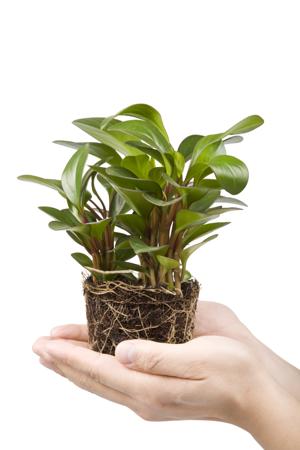 Healthy root system is equal to a healthy tree. The root ball should be of the appropriate size; for every inch of the tree diameter, the root ball should be 10 to 12 inches. Look for girdling or pot-bound roots. If there are too many spiraling roots, they can be harmful for the tree, and hence, they need to be cut down before planting the tree. If there are girdling roots wrapped around the trunk, even on one side, they should be removed as these roots can block the tissues responsible for water and oxygen supply to the tree and may lead to the death of the plant.Improper Planting Location
Healthy root system is equal to a healthy tree. The root ball should be of the appropriate size; for every inch of the tree diameter, the root ball should be 10 to 12 inches. Look for girdling or pot-bound roots. If there are too many spiraling roots, they can be harmful for the tree, and hence, they need to be cut down before planting the tree. If there are girdling roots wrapped around the trunk, even on one side, they should be removed as these roots can block the tissues responsible for water and oxygen supply to the tree and may lead to the death of the plant.Improper Planting Location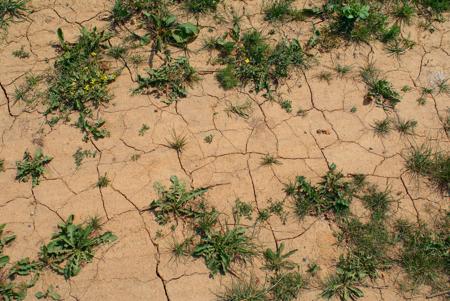 Different species require different planting locations and not being able to choose the correct location may be detrimental for the tree. Some soils are not conducive for sustaining some trees; hence, having a soil test before finalizing the planting location would be wiser. This will help you determine the soil pH and the kind of fertilizers that are necessary for the plant. The type of soil on the planting sight will affect the selection of plant species. If the site has heavy clay soil, then you will need moisture-tolerant trees. On the other hand, if the soil is extremely sandy, drought-tolerant trees would survive better in these areas.Digging a Wrong Hole
Different species require different planting locations and not being able to choose the correct location may be detrimental for the tree. Some soils are not conducive for sustaining some trees; hence, having a soil test before finalizing the planting location would be wiser. This will help you determine the soil pH and the kind of fertilizers that are necessary for the plant. The type of soil on the planting sight will affect the selection of plant species. If the site has heavy clay soil, then you will need moisture-tolerant trees. On the other hand, if the soil is extremely sandy, drought-tolerant trees would survive better in these areas.Digging a Wrong Hole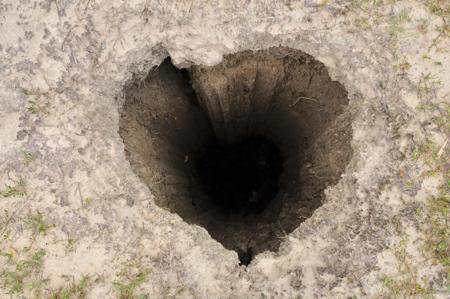 A too deep or too narrow hole is unhealthy for a plant's growth. Digging a hole deeper than the root ball may result in drowning of the roots. The tree should not be planted too deep in the soil, because when the stem that is above the root system comes in contact with the soil, it rots and results in death of the plant. To avoid this, the soil line on all trees--whether potted or bare-rooted--should be approximately 1 inch above the top lateral root of the plant.
A too deep or too narrow hole is unhealthy for a plant's growth. Digging a hole deeper than the root ball may result in drowning of the roots. The tree should not be planted too deep in the soil, because when the stem that is above the root system comes in contact with the soil, it rots and results in death of the plant. To avoid this, the soil line on all trees--whether potted or bare-rooted--should be approximately 1 inch above the top lateral root of the plant.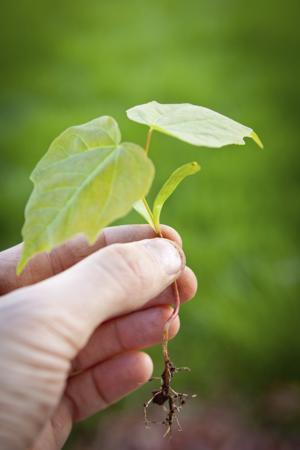 This is one of the crucial points while planting a tree because this is the time when you will be handling the tree to transfer it from its current container to a new place. The plant comes to you in three forms: (i) Bare root; (ii) Balled and Burlapped; and (iii) Container-grown. All these types differ from each other, and hence, they need to be handled differently while transplanting them. Handling them haphazardly may lead to poor growth or even death of the plant. A general rule to handle the plant is not to hold it by the trunk as it can get damaged; always pick it up by the root ball or the container.
This is one of the crucial points while planting a tree because this is the time when you will be handling the tree to transfer it from its current container to a new place. The plant comes to you in three forms: (i) Bare root; (ii) Balled and Burlapped; and (iii) Container-grown. All these types differ from each other, and hence, they need to be handled differently while transplanting them. Handling them haphazardly may lead to poor growth or even death of the plant. A general rule to handle the plant is not to hold it by the trunk as it can get damaged; always pick it up by the root ball or the container.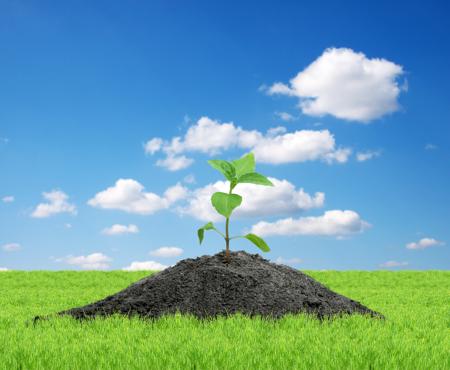 The main objective of mulching is to protect the roots of the tree and maintain moisture in the soil. It also protects the tree from harsh climatic conditions and promotes healthy establishment of the newly planted trees. Over mulching may create too much moisture around the tree and cause damage to the roots. On the other hand, inadequate mulching may amount to less moisture, resulting in dryness around the roots. Also, the type of mulch will depend on the plant species and soil type of your garden. There are varieties of organic and inorganic mulches available to choose from.Improper Watering
The main objective of mulching is to protect the roots of the tree and maintain moisture in the soil. It also protects the tree from harsh climatic conditions and promotes healthy establishment of the newly planted trees. Over mulching may create too much moisture around the tree and cause damage to the roots. On the other hand, inadequate mulching may amount to less moisture, resulting in dryness around the roots. Also, the type of mulch will depend on the plant species and soil type of your garden. There are varieties of organic and inorganic mulches available to choose from.Improper Watering 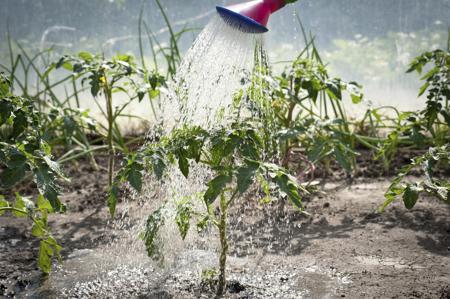 It has been found that most of the newly planted trees die because of too much watering than that is required. This usually happens to the heavy clay soils, and due to excess water, the roots feel suffocated. Although the watering system depends on the soil type and the species, there is a general method for watering all plants. The first watering session should be soon after planting, then on the next day, and again after days.
It has been found that most of the newly planted trees die because of too much watering than that is required. This usually happens to the heavy clay soils, and due to excess water, the roots feel suffocated. Although the watering system depends on the soil type and the species, there is a general method for watering all plants. The first watering session should be soon after planting, then on the next day, and again after days.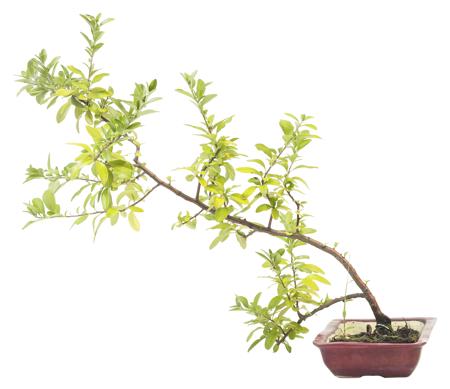 Staking is mainly done to anchor the root ball of the plant and not intended to restrict the movement of the stem or canopy. If the plant is not staked, it will amount to breakage of the newly developed roots and damage to the root ball. However, certain small trees and the ones grown in protected areas may not require staking. The trees that are tall and stand in high windy regions need to be staked. Although, researches have claimed that staking can be damaging to the tree, if done properly, it outweighs the disadvantages.Apart from all the factors mentioned above, the most crucial thing is to monitor the growth of the trees on a regular basis. Walk around your landscape to identify the problems that have emerged, and fix them before they go out of control, causing death of the trees. Also, keep an eye on the weather changes, and be extra careful during harsh conditions.
Staking is mainly done to anchor the root ball of the plant and not intended to restrict the movement of the stem or canopy. If the plant is not staked, it will amount to breakage of the newly developed roots and damage to the root ball. However, certain small trees and the ones grown in protected areas may not require staking. The trees that are tall and stand in high windy regions need to be staked. Although, researches have claimed that staking can be damaging to the tree, if done properly, it outweighs the disadvantages.Apart from all the factors mentioned above, the most crucial thing is to monitor the growth of the trees on a regular basis. Walk around your landscape to identify the problems that have emerged, and fix them before they go out of control, causing death of the trees. Also, keep an eye on the weather changes, and be extra careful during harsh conditions.
Copyright © www.100flowers.win Botanic Garden All Rights Reserved